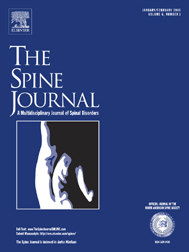
SPINE
E. coli-derived rhBMP-2 offers similar fusion success to AIBG in posterolateral lumbar fusion
Spine J. 2017 Dec;17(12):1866-1874100 patients scheduled for posterolateral fusion due to severe spinal stenosis, grade 1 spondylolisthesis, or spondylolysis were randomized to graft material of either Escherichia coli-derived recombinant human bone morphogenetic protein-2 (rhBMP-2) in a hydroxyapatite carrier or an autologous iliac crest bone graft. Patients were assessed primarily for fusion success on CT at 12 and 24 weeks. Secondary outcomes included clinical scores and rates of adverse events. Results demonstrated no significant difference in successful fusion rate between groups at 12 or 24 weeks, as well as no significant differences between groups in improvement in clinical scores or in the rate of adverse events.
Unlock the full ACE Report
You have access to {0} free articles per month.Click below to unlock and view this {1}
Unlock NowCritical appraisals of the latest, high-impact randomized controlled trials and systematic reviews in orthopaedics
Access to OrthoEvidence podcast content, including collaborations with the Journal of Bone and Joint Surgery, interviews with internationally recognized surgeons, and roundtable discussions on orthopaedic news and topics
Subscription to The Pulse, a twice-weekly evidence-based newsletter designed to help you make better clinical decisions
Exclusive access to original content articles, including in-house systematic reviews, and articles on health research methods and hot orthopaedic topics
Or upgrade today and gain access to all OrthoEvidence content for just $1.99 per week.
Already have an account? Log in


Subscribe to "The Pulse"
Evidence-Based Orthopaedics direct to your inbox.
{0} of {1} free articles
Become an OrthoEvidence Premium Member. Expand your perspective with high-quality evidence.
Upgrade Now












































































